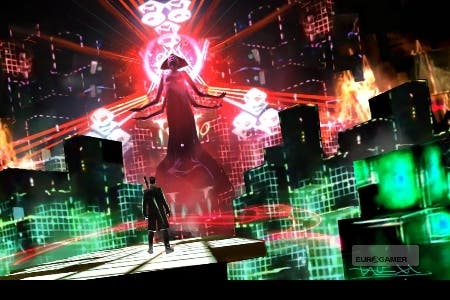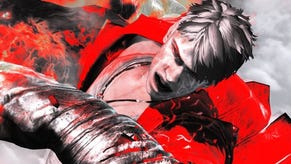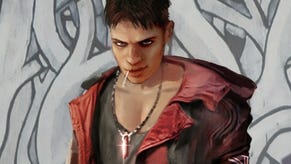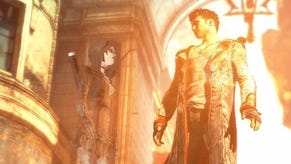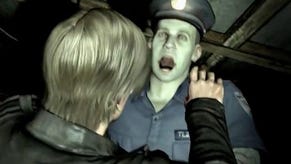Dragon's Dogma taught Capcom new tricks that give Devil May Cry the feel of 60 frames per second, publisher claims
Technique takes advantage of the brain's ability to fill in the blanks.
During the development of open world fantasy action role-playing game Dragon's Dogma Capcom learnt new tricks that give Devil May Cry the feel of 60 frames per second, the publisher has claimed.
Ever since it emerged that DmC, developed by Cambridge-based studio Ninja Theory in collaboration with Capcom Japan using Unreal Engine 3, runs at 30 frames per second - half that of previous games in the series - fans have cast doubt on its quality. Those who wait for the PC version will of course be able to run the game at a silky smooth 60 frames, but PlayStation 3 and Xbox 360 owners are locked at 30.
Director Hideaki Itsuno, who has directed previous DmC games, admitted 60 frames per second “would be better”, but insisted the game will be responsive enough to satisfy fans - and a lot of that is down to Dragon's Dogma, which also runs at 30 frames.
“During the course of the development of Dragon's Dogma we did a lot of experimentation and happened upon some techniques for working with Unreal Engine, some fairly elaborate techniques, that allow for a controller responsiveness that gives the player the feel of 60 frames per second,” Itsuno told Eurogamer.
How, exactly, Capcom has achieved this effect remains a trade secret, but Itsuno provided some hints.
“60 frames per second is a speed the brain and the eye can catch up with and understand,” he said. “But at 30 frames per second there's a technique where you take advantage of the brain's ability to fill in the blanks.
“So even though you have it running at 30 frames per second, you create the motions and the poses in such a way that the brain will naturally fill in what would have been the extra frames.
“Also, on the players' side, we made some adjustments to the button response and when it's reflected on screen.”
Itsuno said action games that run at 60 frames per second can have a tiring effect on players' eyes after a long time because the frames themselves “almost shake or flash”. Because of this, “adjusting the speed is almost necessary”.
But why go for 30 frames instead of 60 in the first place?
According to Itsuno, this decision was taken to give Ninja Theory the opportunity to create “the best visual style they were looking for”.
Stuart Adcock, technical art director at the UK developer, elaborated.
“Having the city feel like it can manipulate and move and having more atmospherics was a way of us in our eyes feel like we have a more complete experience,” he told Eurogamer.
“Hopefully it's something that feels a lot more of a visual feast. We just kept thinking, the game is a stylish game, but that's not just on the combat. We need to think of it for every aspect. Running at 30 allowed us to be able to do that to a certain extent.”
Adcock, like Itsuno, pointed to the Unreal Engine as a contributing factor in this decision.
“We were limited a little bit by the engine capabilities,” he explained. “We could have done it at 60 but we would have had to have had very static environments and less combat effects.
“When we were thinking of doing a Ninja Theory interpretation of it we wanted to bring so much more to the table with visual niceties. We still felt that with 30 we could provide a good experience."
So, what about those special techniques then?
“We did a lot of work trying to simulate the effects of fluid motion even at 30," Adcock revealed. "We simulated more motion blur and made sure the animations had solid in-betweens and nothing that might feel too jerky. We're really pleased with the interaction and the way the combat plays.
“We still feel like as soon as you stop playing DmC and play other games they feel very slow in comparison and a bit sluggish. At least that's for me. We're quite pleased with how responsive and how fluid it feels.”
Players will be able to make their own minds up when the DmC demo launches later this month.
